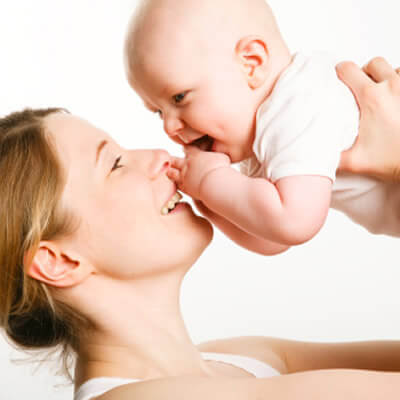 The supportive process between caring adults and children, youth, or young adults that fosters self-regulation development is called ‘co-regulation’.
The supportive process between caring adults and children, youth, or young adults that fosters self-regulation development is called ‘co-regulation’.
Co-regulation in caregiving
The concept of co-regulation between a mother and her baby involves the dynamic and reciprocal interaction of their nervous systems to achieve emotional and physiological balance and connection.
What is the nervous system?
The nervous system is the master controller of the body. It is a complex and intricate network comprising the brain, spinal cord, nerves and cells. The nervous system carries information between our brain & body, allowing us to perceive and respond to our environment, control and co-ordinate our bodily functions, and interact with the world around us.
Did you know?
At just six weeks, the embryo’s brain and nervous system begin to develop. Whilst continuing to grow & develop, the nervous system controls and co-ordinates the development of all other body systems. Development of the nervous system continues throughout childhood, only completing around the age of 25.
Developmental stages and benefits of co-regulation
Emotional and Behavioural Synchronisation: Babies are born with underdeveloped nervous systems and limited self-regulation capabilities. They rely on their caregivers, often the mother, to help them regulate their emotions and behaviors.
Neuroception: The nervous system of both the mother and the baby is attuned to each other’s emotional states and signals. This process, known as neuroception, allows the baby to “read” the mother’s emotional cues and feel safe when the mother is calm and responsive. Conversely, the mother’s nervous system responds to the baby’s cues, helping her understand the baby’s needs.
Regulation of Stress Response: Babies can become dysregulated when they experience stress or discomfort. The mother’s calming presence and soothing touch have a regulatory effect on the baby’s stress response. The mother’s body and nervous system produce calming and reassuring signals, which can help the baby calm down and return to a more regulated state.
Attachment and Bonding: Co-regulation plays a crucial role in forming secure attachments between the baby and the mother. A secure attachment fosters trust and emotional connection. When a baby’s needs are consistently met, and their emotional state is well-regulated, they are more likely to develop a secure attachment with their caregiver.
Mirror Neurons: Mirror neurons in the brain play a role in co-regulation. These neurons fire when an individual observes someone else’s actions or emotions. For example, when a mother smiles at her baby, the baby’s mirror neurons can activate, leading to shared emotional experiences and bonding.
Practical examples of co-regulation include:
- Keeping your voice calm and breathing slow whilst comforting your child
- Comfort and reassure with physical touch like a hug
- Encourage toddlers to express their feelings through play
- Talk to them in clear simple language about their emotions
